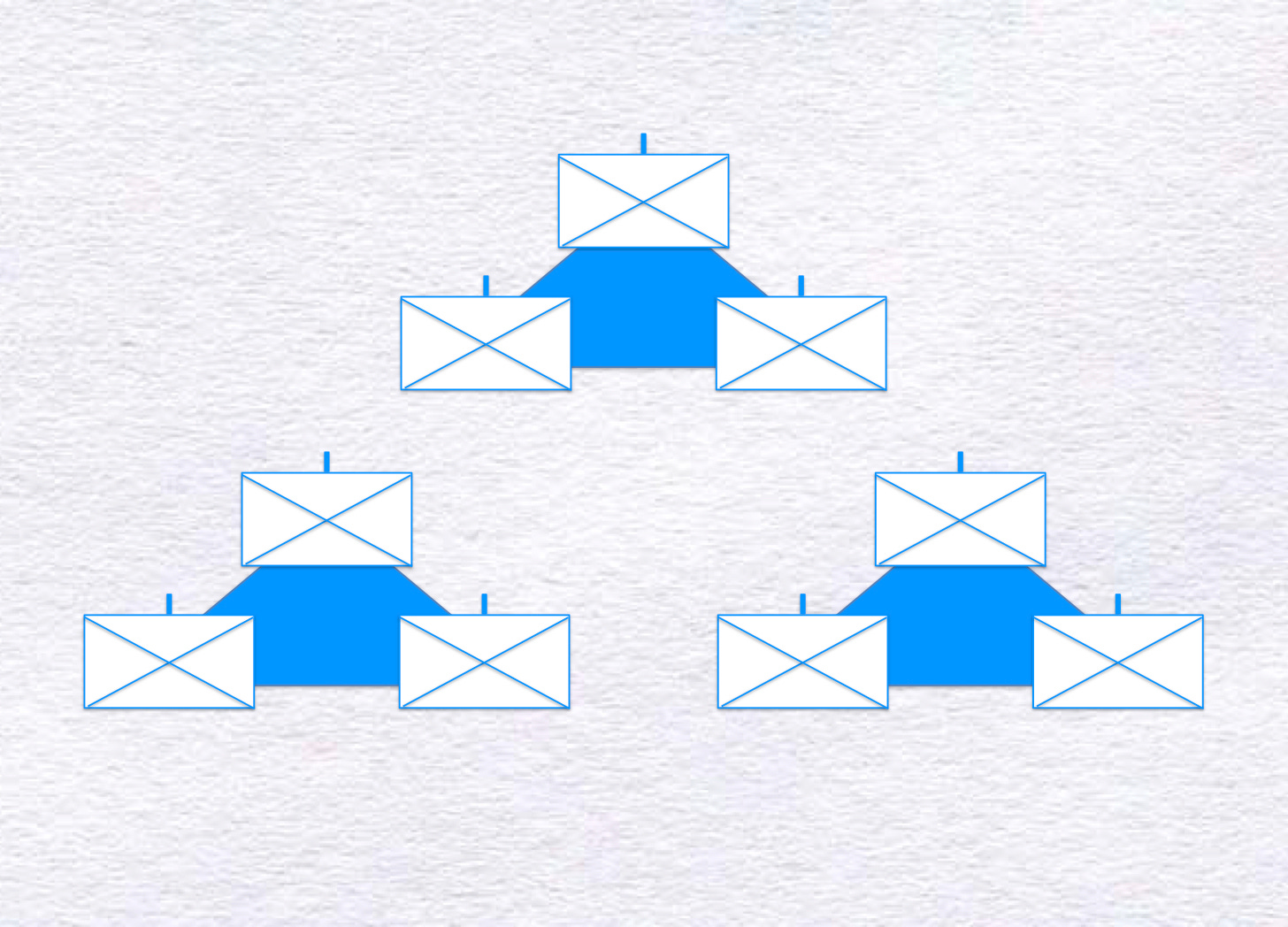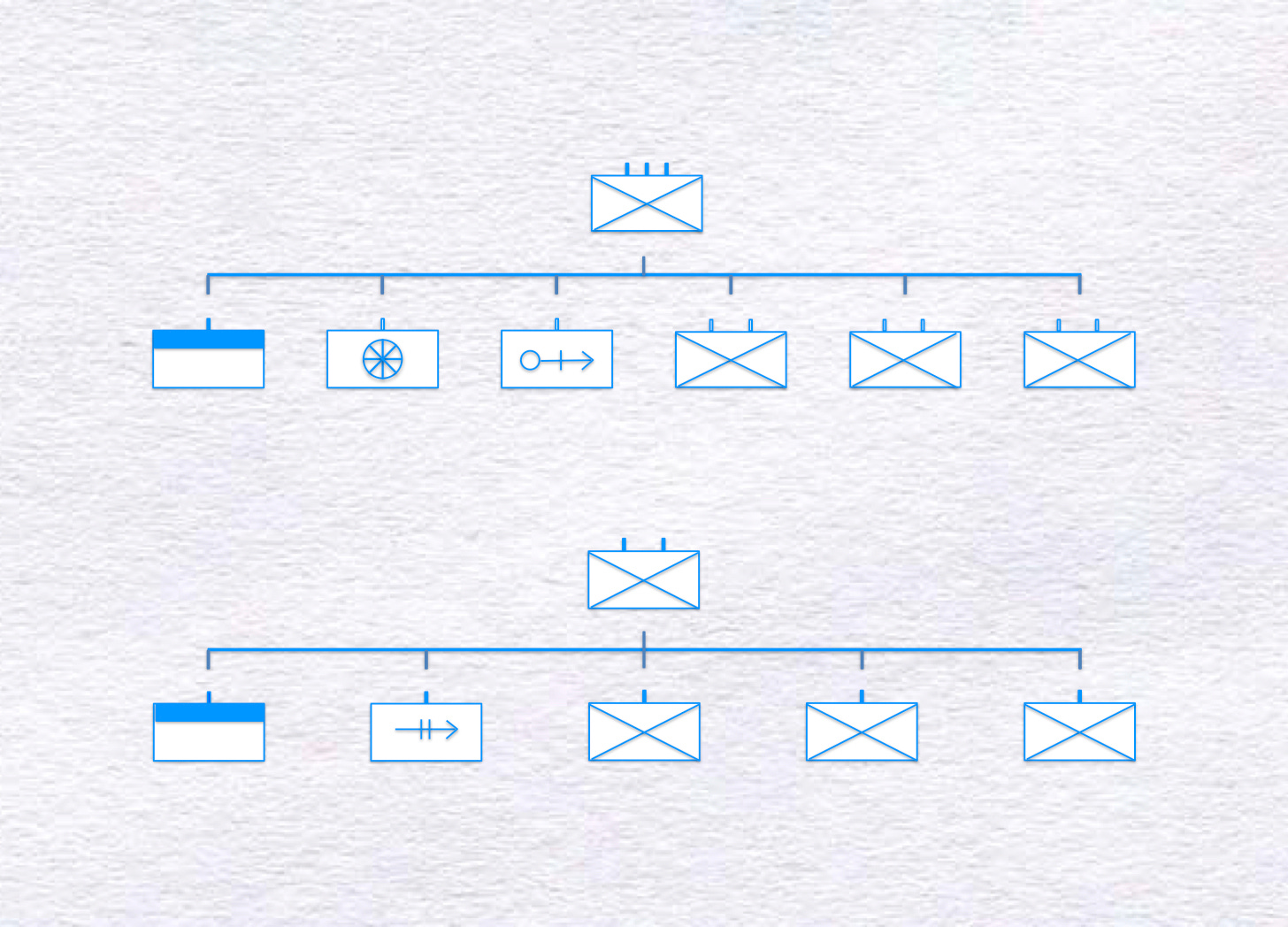Note: Links attached to Finnish words will take you to a translation site (whether Google Translate or DeepL) where a robot will pronounce the words in question in a reasonably authentic manner.
The Regiment
The fighting elements of the 16th Infantry Regiment hang upon triangular frames. That is, the regiment consists of three infantry battalions, each of which breaks down into three rifle companies, thereby making a total of nine rifle companies.
At each of these two echelons, the infantry elements work closely with a company armed with crew-served weapons. At regimental level, this company operates four 81mm mortars. At the battalion level, it is armed with twelve water-cooled, tripod-mounted, rifle-caliber Maxim guns.
In addition to its infantry battalions and mortar company, the regiment possesses a headquarters company and a transport company. (Each infantry battalion is also provided with a headquarters company, a unit that, with some justice, might be described as a somewhat smaller version of its regimental counterpart.)
The nine rifle companies of the 16th Infantry Regiment are numbered in a single sequence. The 1st, 2nd, and 3rd Rifle Companies belong to the 1st Infantry Battalion; the 4th, 5th, and 6th Rifle Companies to the 2nd Infantry Battalion; and the 7th, 8th, and 9th Companies to the 3rd Infantry Battalion.
Known in Finnish by the delightfully alliterative name of konekivääri komppania, each machine gun company takes the name of its parent battalion. Thus, the machine gun company of the 1st Battalion is 1. KKK, that of the 2nd Battalion is 2. KKK, and that of the 3rd Battalion is 3. KKK. (Notwithstanding this convention, the commanding officer of the 16th Infantry Regiment, Lieutenant Colonel Aaro Pajari, reserves the right to detach machine gun companies from their parent battalions in order to form task forces of various types.)
The Mortar Company
The mortar company bears no number. Known simply as the Kranaatinheitin Komppania [literally “grenade-thrower company”], it breaks down into a small headquarters (of one officer and four men), a service platoon, and two mortar platoons. Each of the last-named platoons, in turn, consists of a tiny headquarters (of one officer and one man), a five-man observation team, and a pair of mortar squads (each of ten men, two carts, two draft horses, two riding horses, and a single 81mm mortar.)
While manufactured in Finland, the 81mm mortars of the Kranaatinheitin Komppania borrowed most of their features from the Stokes-Brandt mortar used by a large number of contemporary armies. Thus, it can fire a 6.5-kilogram shell out to 1,200 meters (or so) and a shell weighing about half as much a little more than twice as far.
With a strength of three officers and eighty-one enlisted men, the Kranaatinheitin Komppania is the smallest company in the 16th Infantry Regiment. At the same time, it enjoys a ratio of officers to enlisted men (1:27) that is higher than any other company in the regiment. (The ratios for rifle and machine gun companies are, respectively, 1:36 and 1:37.)
The provision of an officer and an observation team to each mortar platoon facilitates the separate employment of such units. In the near future, moreover, when additional mortar tubes emerge from the workshops of the Tampella company in the regiment’s home town of Tampere, the Finnish Army will be able to augment the firepower of its infantry regiments by adding additional mortar squads to existing mortar platoons.
The Transport Company
Formally known as the “regimental column” [Rykmentin Kolonna], the transport company consists of two ration platoons (each with thirty-seven one-horse carts), and one ammunition platoon (with fifty-eight one-horse carts). (As the commander of the transport company is counted as a member of the regimental staff and the platoons enjoy considerable autonomy, the transport company has no headquarters.)
As each of the platoons of the transport company possesses its own service and mess section, it is able to operate at some distance from the rest of the company. (In each platoon, seven of the carts belong to the service and mess section. Thus, thirty of the carts of each ration platoon, and fifty-one of the carts of the ammunition platoon, carry cargo for the regiment as a whole.)
The Regimental Headquarters Company
The regimental headquarters company [Esikuntakomppania] provides:
command, reconnaissance, communications, and engineer support for the regiment as a whole
communications and engineer support for the three battalions and the four independent companies
housekeeping services (such as cooking and blacksmithing) for the regimental headquarters and the four independent companies
To this end, the regimental headquarters company is organized into four elements:
a headquarters platoon (with a headquarters section and two nine-man scout squads)
a communications platoon (with a headquarters, a communications center, three nine-man telephone squads, one nine-man radio squad, and one four-man blinker team)
a service platoon (with a service section and a service-and-mess squad)
an engineer platoon (with a nine-man headquarters and four nine-man engineer squads)
The Infantry Battalion
Each infantry battalion consists of a headquarters company, a machine gun company, and three rifle companies. It terms of basic building blocks, this translates to twelve machine gun squads, twenty-four light machine gun squads, and twenty-four rifle squads.
The rifle companies are formed on a square framework. That is, the fighting component consists of four platoons, each of which consists of four squads. (In many armies that use this sort of arrangement, the squads are paired off to form sections. This, however, is not the case with the Finnish Army. Thus, the leaders of the rifle and light machine gun squads report directly to their platoon commander.
Within each rifle platoon, each of the two rifle squads rates a leader (armed with a bolt-action rifle), a submachine gunner (with a Suomi sub machine gun), and eight riflemen. Each of the two light machine gun squads is authorized a leader (armed with a rifle), three machine gunners (armed with pistols), and three ammunition carriers (armed with rifles.)
The platoon headquarters (depicted along the right edge of the diagram) consists of a platoon leader, a platoon sergeant, and two messengers.
In addition to its four rifle platoons, a rifle company possesses a headquarters (with fourteen men) and a small service platoon (of twenty-four men.) (Many of the men of the company headquarters serve as messengers.)
The Headquarters Company of an Infantry Battalion
Like the regimental headquarters company, the headquarters company of each infantry battalion possesses a service platoon, a communications platoon, and a command platoon that includes a reconnaissance element. However, while the service platoons at both echelons rate the same number of soldiers, the communications and command platoons of the regimental headquarters company are nearly twice as large as their battalion-level analogs.
Roughly half of the men in each command platoon serve as scouts. The twenty scouts of the regimental headquarters company are organized into a ten-man bicycle squad and a squad of ten horsemen. The ten scouts of the battalion headquarters company make do with two riding horses and eight bicycles.
Like their colleagues in the communications platoon of the regimental headquarters company, the signalers of the battalion headquarters company stand a good chance of specializing in wire communications. (Eighteen of the thirty communicators in each battalion, and twenty-seven of the fifty-four communicators in the regimental headquarters company, are wiremen.)
Very few of the spark jockeys at either echelon operate radios. (Each battalion rates a single radio set, of a type that can send morse code messages as far as thirty kilometers. Each regimental headquarters company is authorized two additional sets of that type. In other words, no one within the regiment enjoys the ability to converse viva voce via radio.)
The battalion headquarters company possesses no engineer platoon. At the same time, it is provided with elements not found in the regimental headquarters company. These are:
an ammunition squad
a medical squad
a chemical warfare defense squad
The Machine Gun Company
The Machine Gun Company is made up of a substantial headquarters (with one officer and twenty men), an oversized service platoon (with forty-six men), and three machine gun platoons (with one officer and twenty-nine men).
The size of the service platoon owes much to the presence of an ammunition section with an authorized strength of twenty-nine men. (The corresponding element of a rifle company weighs in at three men.)
Sources:
Allen F. Chew The White Death: The Epic of the Soviet-Finnish Winter War (East Lansing: Michigan State University Press, 1971)
Bair Irincheev War of the White Death: Finland Against the Soviet Union, 1939-1940 (Harrisburg: Stackpole, 2012)
Sami H.E. Korhonen “The Finnish Army in the Winter War” Battles of the Winter War (Note: As portions of this splendid website are down for maintenance, I made use of printouts I made several years ago.)
Leo Niehorster “The Finnish Armed Forces” World War II Armed Forces: Organizations and Orders of Battle
William Trotter Frozen Hell: The Russo-Finnish Winter War of 1939-1940 (Chapel Hill: Algonquin Books, 1991)
















As a layperson, up until a few years ago, I never thought about how armies are actually organised, and I was assuming a much simpler layout. Thanks!